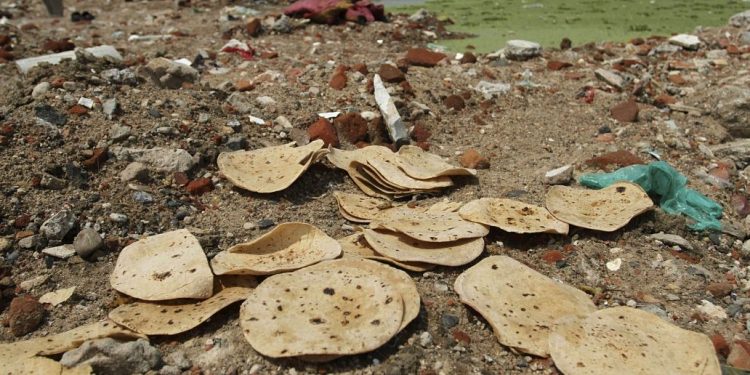Sanjib Kumar Karmee
Food waste is organic in nature. Most of it ends up in landfills causing environmental and health concerns. Dumping of food waste in landfills is not only neglecting a potential resource but also amounts to inefficiently using energy, nutrients, and manpower invested during food production. Thus far, only a small amount (5-10 per cent) of food waste is recycled. In this context, recycling food waste is important.
It is well known that proteins are extensively used in combination with other feeds for animal and fish farming. By and large, proteins needed for this purpose are obtained through trawling. It is reported that the global fishing fleet is two to three times more than the oceans can actually support in a sustainable manner. Excess trawling activities result in resource depletion, low biological growth rates, and low biomass levels in water bodies. Eventually, it can also imbalance the entire aquatic ecosystem.
The twin problems caused by food waste and excess trawling can be circumvented by converting food waste into protein and other protein-rich feeds for animal consumption. Traditionally, livestock animals act as bio-processors that turn inedible food (for human consumption) into protein-rich edibles such as meat, eggs, and milk. In this regard, conversion of food waste into animal feed is a viable option that has the potential to address waste management, sustainability, food security, and the application of circular economy via resource recovery.
Use of insects to produce protein-rich feeds from food waste is emerging as an advanced area of research. Both the scientific community and industries are seriously looking into the use of insects as feedstuff based on organic waste recycling. So far, researchers are focussing on five major species of insects. They are: the common housefly (Musca domestica), the black soldier fly (Hermetia illucens), the mealworm (Tenebrio molitor), locusts (Locusta migratoria, Schistocerca gregaria) and silkworms (Bombyx mori).
The black soldier fly is native to the USA. It is now found worldwide across all climate zones. Its larvae are omnivorous. Black soldier fly larvae are widely researched for their capability to consume food waste. In terms of food waste recycling the black soldier fly is found to be promising since per day a larva can consume food upto twice its normal weight. A fully grown larva is known to produce biomass with a substantial amount of protein (40-45 per cent), fat (35 per cent), and amino acids. Such a composition makes it attractive as a feed for livestock.
Application of the black soldier fly for organic waste management has been a topic of research since the 1970s. Recently, several industrial-scale technologies are developed, and start-ups are now relying on successful technologies. InsectiPro, a Kenyan insect farm, is feeding around 30 tonne of discarded food waste collected from Nairobi to black soldier fly larvae. Subsequently, the obtained larvae are dried and sold as animal feed. During this process, waste generated by these larvae is supplied to various farms for use as fertiliser. In line with this, the UK Research and Innovation has invested in a London-based company called Entocycle. The company breeds black soldier flies by feeding them food waste. The insects are subsequently harvested and processed into animal feed using an automated system.
The technology described here addresses three UN recommended Sustainable Development Goals — SDG 11 (Sustainable cities and communities): cities can incorporate this method into their waste management system to realise the full potential of untapped food waste; SDG 12 (Responsible consumption and production): instead of paying for removal and disposal of food waste, organisations can access a new revenue stream by selling animal feed and fertiliser; and SDG 14 (Life below water): insect proteins obtained from food waste can replace a significant portion of the proteins currently sourced from trawling oceans.
The writer is a scientist and an alumnus of IIT-Madras.







































